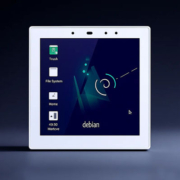Best Smart Home Controller for Lights, HVAC, and Security
In modern living, a smart home controller has become the central hub that ties together essential systems like lighting, HVAC (heating, ventilation, and air conditioning), and security. Instead of relying on multiple apps or remotes, a controller provides a unified interface—through a touchscreen panel, mobile app, or even voice commands—to manage everything seamlessly. But what makes a controller truly the “best” option for these critical functions? Let’s explore the key factors.
1. Unified Control for Daily Comfort
The best smart home controller is one that simplifies daily routines. Imagine walking into your home and with one tap:
- Lights adjust to your preferred brightness.
- HVAC automatically sets the temperature for comfort.
- Security locks and cameras activate for peace of mind.
A unified interface ensures you don’t need to juggle multiple devices, saving both time and effort.
2. Compatibility and Integration
Smart homes often combine products from different brands and protocols (Zigbee, Z-Wave, KNX, Wi-Fi, or proprietary systems). A good controller should:
- Support multiple protocols to ensure flexibility.
- Integrate with popular ecosystems like Alexa, Google Home, and Home Assistant.
- Allow future expansion without replacing the entire system.
3. Lighting Control
For lighting, a smart controller should go beyond simple on/off functions:
- Dimming and scene control (e.g., reading mode, movie night).
- Scheduling and automation (lights turn on at sunset).
- Energy efficiency tracking to reduce power consumption.
4. HVAC Control
Managing heating and cooling is one of the most valuable features of a controller:
- Smart scheduling that adapts to your lifestyle.
- Remote adjustments via mobile apps.
- Energy-saving modes to cut costs while maintaining comfort.
5. Security Management
Security integration is crucial for protecting your home:
- Real-time alerts from door sensors, motion detectors, or cameras.
- Remote monitoring with live video feeds.
- Integration with locks and alarms to ensure all entry points are secured.
6. User-Friendly Interface
A high-quality controller should provide:
- Touchscreen panels for in-wall use.
- Mobile app control for convenience.
- Voice assistant compatibility for hands-free commands.
7. Customization and Scalability
Every home is unique, so the best smart home controllers offer OEM/ODM customization and allow for future scalability. Whether it’s a small apartment or a large commercial building, the system should adapt to different needs.
The best smart home controller for lights, HVAC, and security is one that brings simplicity, compatibility, and security together in a single solution. It should unify your daily routines, save energy, and protect your property—all through an intuitive and reliable platform.
Whether you’re setting up a smart home from scratch or upgrading an existing system, investing in a versatile controller ensures comfort, safety, and convenience for years to come.




